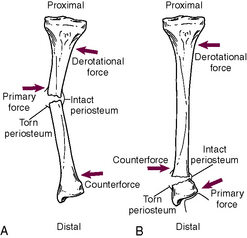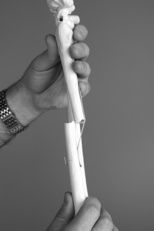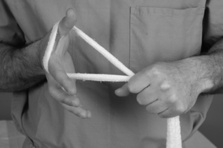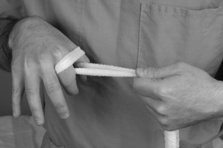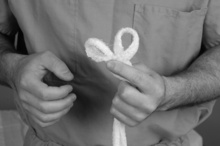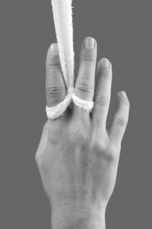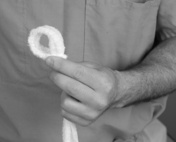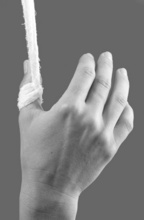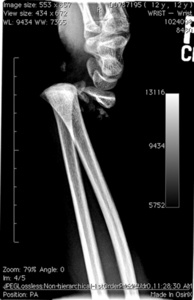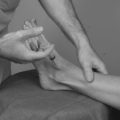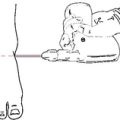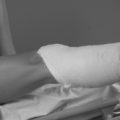Chapter 8 Basic Principles of Reduction Maneuvers
The three-point principle
Exaggerating the deformity
1. Indications for reduction by exaggerating the deformity:
a. Fully displaced fractures with an intact periosteal hinge (typically in children) and bayonet apposition (Figure 8-2)
The value of traction
1. Overcoming muscle force:
4. Applying traction:
a. Double digit construct:
(3) While holding one side of the gauze taut with the left hand, spread your right index finger and thumb apart, then pronate your right forearm (Figure 8-7).
(5) Bring the tips of your index finger and thumb together and pull the loops out with your index finger (Figure 8-8).
(6) Place each of the newly formed traction loops around each of the fingers or toes to which traction will be applied (Figure 8-9).
c. Alternatively, commercially available Chinese finger traps may be used (Figure 8-13).
d. Use commercially available weight trees to attach the weights and provide traction (Figure 8-14).
(2) If weights are not available, use large intravenous bags (Figure 8-16) in place of the weights and follow the aforementioned procedure.
Physeal injuries
1. Reduction of a Salter-Harris fracture (Figure 8-17) should be attempted only after one is skilled with adult fractures and extraphyseal pediatric fractures in that region.
2. A level of anesthesia that will limit muscle spasm and involuntary or voluntary muscle contraction should be attained and may be achieved through one of the following methods:
5. More traction than is typical should be used to fully disengage the fracture before attempting a reduction.
Precautions
1. Avoid placing either primary force or counterforce directly over the following potential sites of nerve compression when molding a splint or cast or when obtaining a reduction in plaster:
2. Use broad surfaces such as the palm of the hand for the reduction whenever possible to distribute force over a larger area.
3. The exaggeration of deformity technique should be used with caution and only when direct reduction techniques fail. An intact periosteal hinge prevents reduction by direct means but prevents over-reduction and complete destabilization of the fracture.
Pearls
3. To correct translation only, use traction to disengage the fragments, then apply a correcting force just distal to the fracture as well as a counterforce just proximal to the fracture.

